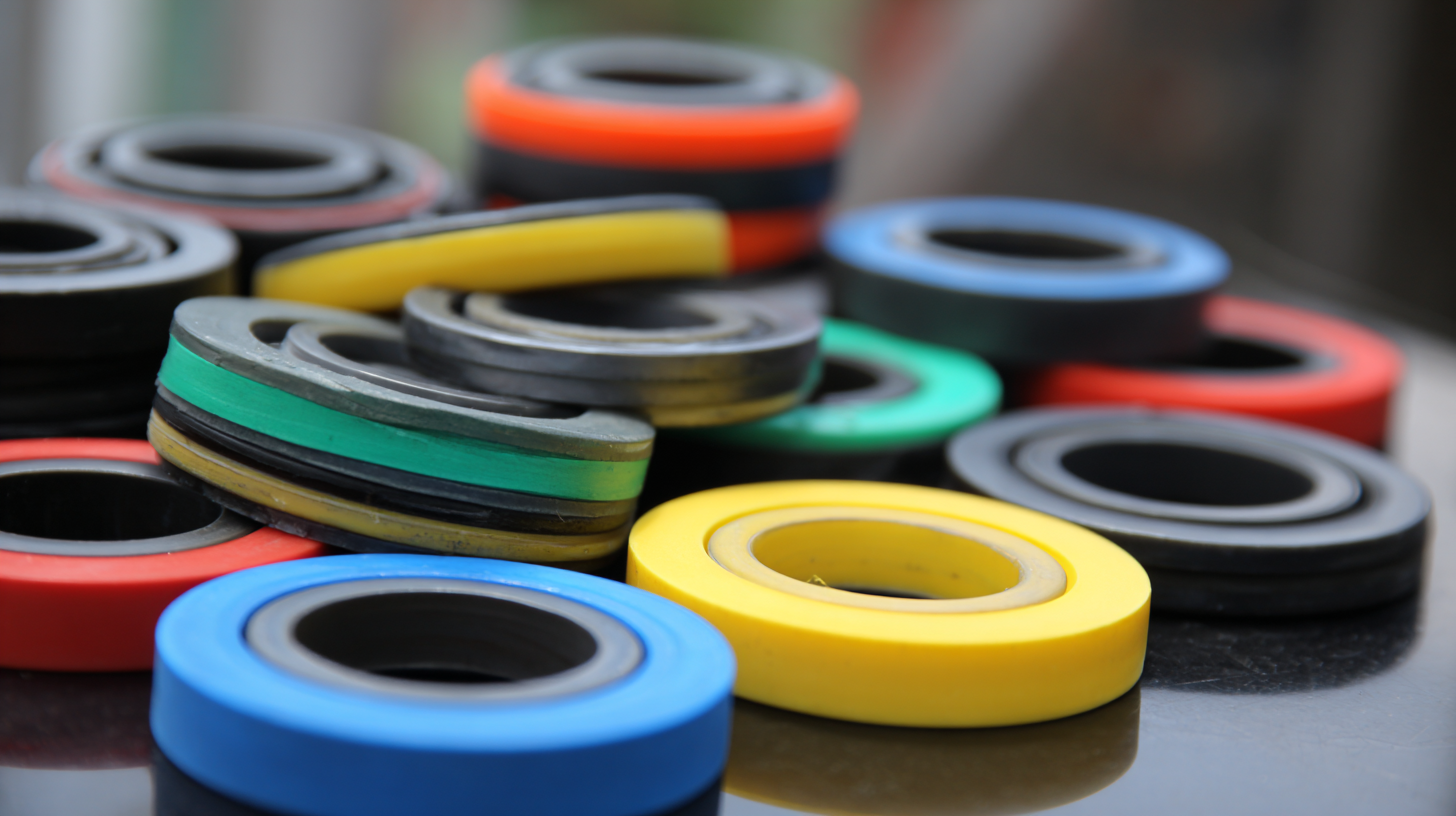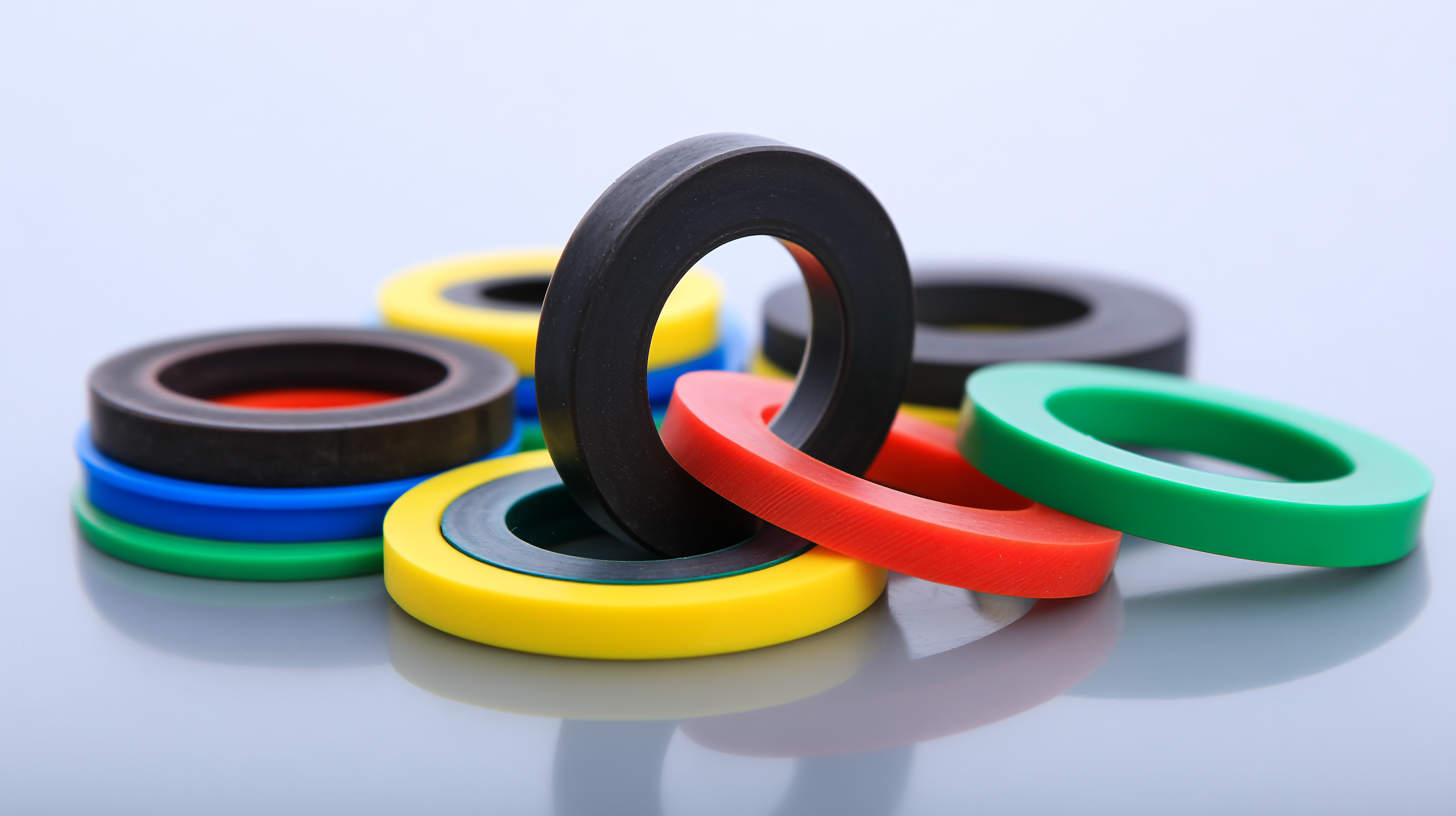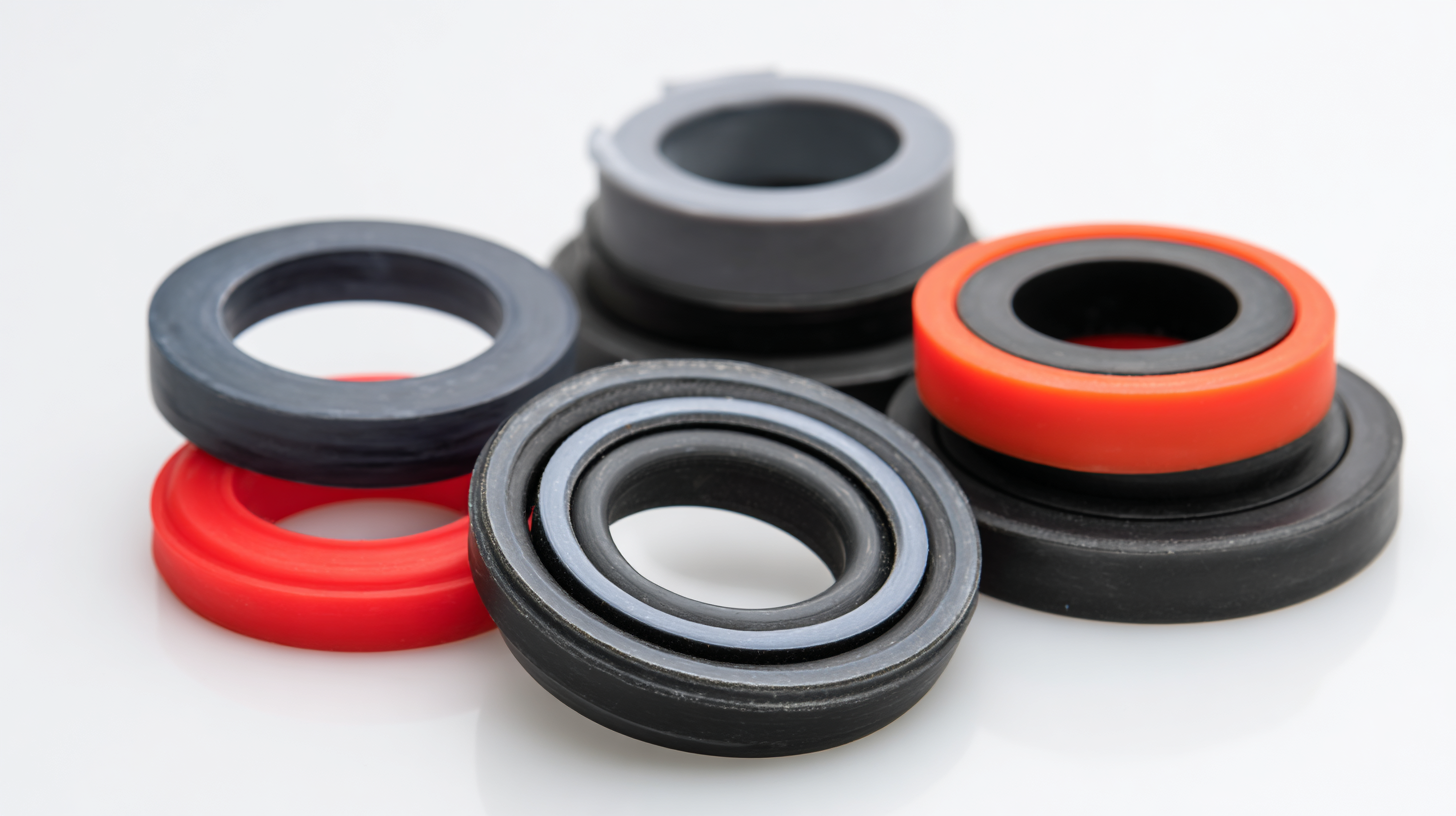


In the evolving landscape of manufacturing, rubber gaskets play a crucial role in ensuring the integrity and performance of various industrial applications. The global market for rubber gaskets is projected to witness significant growth, valued at approximately $10.3 billion in 2020 and expected to reach around $14.5 billion by 2025, according to industry reports. This surge is driven by rising demand in sectors such as automotive, aerospace, and oil and gas, where reliability and durability are paramount. However, sourcing the best rubber gaskets presents numerous challenges, including material selection, manufacturing processes, and compliance with stringent industry standards. As manufacturers strive to adapt to these demands while maintaining quality and cost-efficiency, understanding the complexities of the rubber gasket supply chain becomes essential for future success in this dynamic market.

In 2025, the challenges of sourcing high-quality rubber gaskets are becoming increasingly complex as the industrial gaskets market experiences significant growth. With a projected expansion to USD 16.84 billion by 2030, manufacturers and consumers alike are facing heightened expectations regarding the performance and durability of rubber gaskets. The increasing demand necessitates an acute awareness of quality standards, as the implications of using subpar materials can lead to severe operational issues across various industries.
One major challenge in identifying reliable rubber gasket manufacturers is navigating the vast array of available options. As technology advances, so do the techniques for testing and evaluating these components. Automated gasket inspection methods, such as deep learning-based fault detection, are emerging as valuable tools in ensuring quality control. However, manufacturers must also consider the composition of rubber materials, including the type of polymers used and the additives present, which significantly affect performance. Therefore, sourcing partners who utilize advanced testing methods and maintain stringent quality assurance protocols will be crucial for success in the marketplace.
| Challenge | Description | Impact Level | Mitigation Strategies |
|---|---|---|---|
| Quality Assurance | Difficulty in verifying the quality of materials used in gaskets. | High | Conduct thorough audits and ask for material certifications. |
| Supplier Transparency | Limited visibility into the manufacturing processes of suppliers. | Medium | Establish clear communication and request transparency in operations. |
| Cost Competitiveness | Rising costs of high-quality rubber materials. | High | Negotiate long-term contracts and explore alternative materials. |
| Lead Times | Extended lead times in production and delivery. | Medium | Plan ahead and maintain buffer stock for critical components. |
| Technical Expertise | Lack of expertise to evaluate technical specifications. | High | Engage with consultants or train staff in technical evaluations. |
The global supply chain disruptions have significantly impacted the sourcing of rubber gaskets, particularly in the wake of recent challenges faced by manufacturers. After a strong post-pandemic rebound, U.S. manufacturing appears to be stalling, with reports indicating a decline in production capacity. For instance, the severe winter storm in Texas this past February disrupted refining and petrochemical supply chains, exacerbating material shortages. These disruptions are critical as they hinder the availability of essential raw materials needed for rubber gasket production, which is crucial for various applications, including automotive manufacturing.
Furthermore, the automotive industry's shift towards electric vehicles (EVs) has escalated the demand for rubber, posing additional sourcing challenges. Industry reports suggest that the demand for rubber in the automotive sector is projected to grow by over 3% annually, driven largely by the increasing production of EVs. However, traditional supply sources are becoming volatile due to geopolitical tensions and the recent trends toward supply chain diversification. Companies are under pressure to re-evaluate their sourcing strategies to mitigate risks, ensuring they can maintain continuity despite external disruptions. As such, navigating these compounded challenges requires careful consideration in developing sustainable and resilient sourcing practices for rubber gaskets.
The rubber gasket industry has seen significant advancements in material innovation, focusing on enhancing performance while managing costs. According to a report by MarketsandMarkets, the global rubber gaskets market is projected to reach $21.19 billion by 2025, driven by the increasing demand for high-quality sealing solutions in various applications. This growth highlights the importance of developing materials that can offer superior thermal resistance, chemical compatibility, and durability without inflating production costs.

Recent innovations in rubber compositions, such as the incorporation of synthetic elastomers and advanced fillers, have created gaskets that exhibit improved functionality. For instance, Nitrile (NBR) gaskets are becoming popular due to their excellent abrasion resistance and oil compatibility, making them suitable for automotive and industrial applications. A study by Research and Markets indicates that the use of eco-friendly materials and manufacturing processes is also influential, with 32% of organizations prioritizing sustainable practices in their sourcing strategies. This balance between high performance and cost-effectiveness is essential for manufacturers aiming to remain competitive in a market increasingly driven by both functional and environmental considerations.
In 2025, the rubber gasket industry will face significant challenges largely driven by regulatory changes. As the global industrial rubber market is projected to grow from $11.48 billion to $14.90 billion by 2030, translating to a CAGR of 5.4%, these evolving regulations may create both opportunities and hurdles for manufacturers. In particular, the debate surrounding per- and polyfluoroalkyl substances (PFAS) is intensifying, with calls for more selective regulations by groups like the European Sealing Association. This shift in regulatory focus will likely compel companies to adapt their sourcing and manufacturing processes to comply with new environmental standards.
Furthermore, the anticipated growth of the mechanical seals market, which is expected to rise by $1.75 billion from 2025 to 2029, underscores the importance of innovation within the industry. Advancements in artificial intelligence are redefining market trends, altering how products are developed and brought to market. As manufacturers navigate these regulatory landscapes and technological shifts, they will need to establish robust strategies for sourcing high-quality rubber gaskets that meet stringent compliance standards while accommodating market demands.
With the gasket and seal market in North America and Asia-Pacific projected to reach approximately $528 million by 2025, adapting to these changes will be crucial for sustaining long-term growth.
Sourcing rubber gaskets can be fraught with challenges, from fluctuating material costs to supplier reliability. One crucial strategy to mitigate these obstacles is leveraging innovative technologies, such as generative AI. By using AI tools, businesses can analyze procurement data more effectively, identify potential risks, and enhance decision-making processes. This can lead to deeper insights into supplier performance and market trends, allowing companies to make informed choices when selecting rubber gasket suppliers.

Moreover, collaboration and communication with suppliers are key to overcoming sourcing hurdles. Establishing strong partnerships and maintaining open lines of communication can lead to more resilient supply chains. Companies can benefit from sharing demands and forecasts with their suppliers, helping them to be better prepared for fluctuations in demand. This approach not only aids in securing better prices but also enhances the overall efficiency of sourcing strategies in the rubber gasket market, ultimately promoting a more sustainable supply chain.